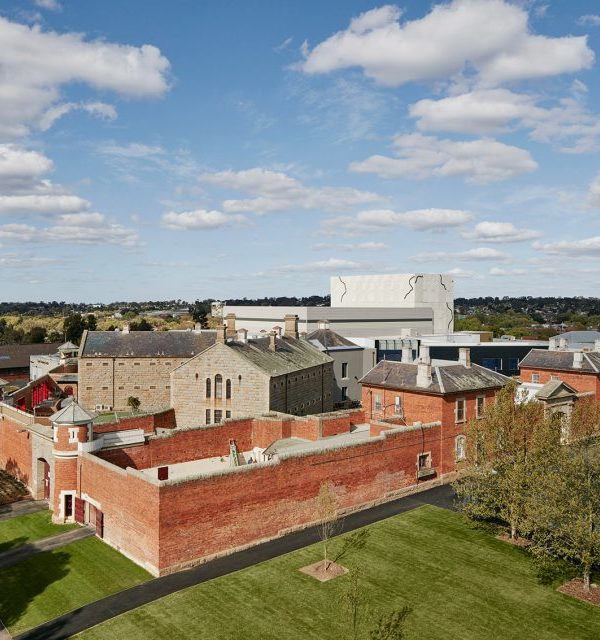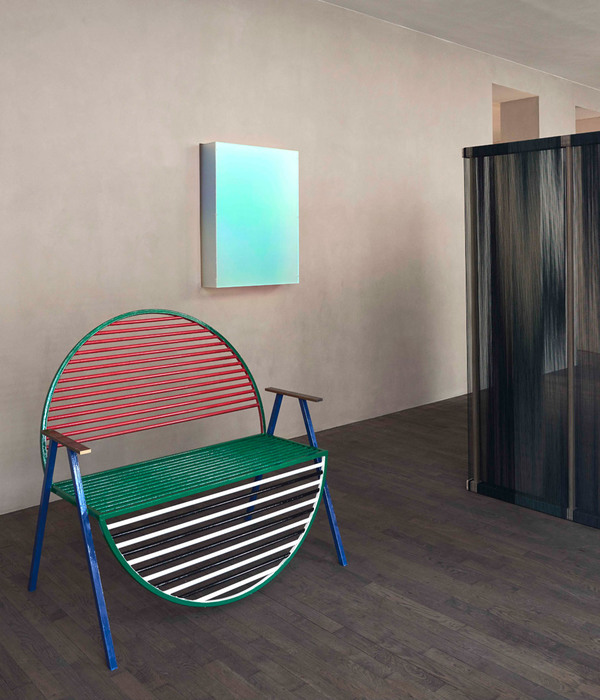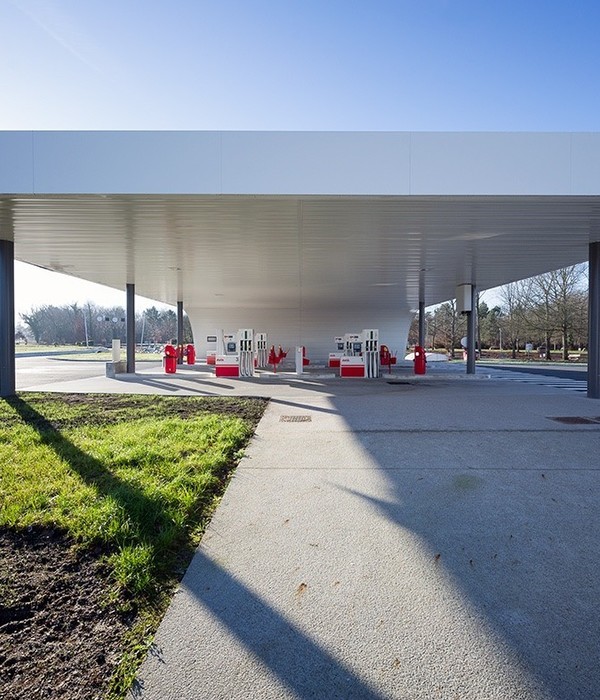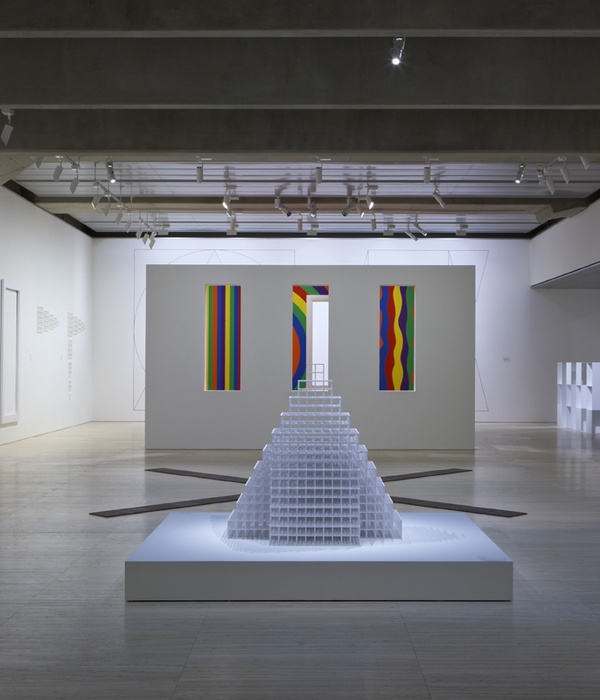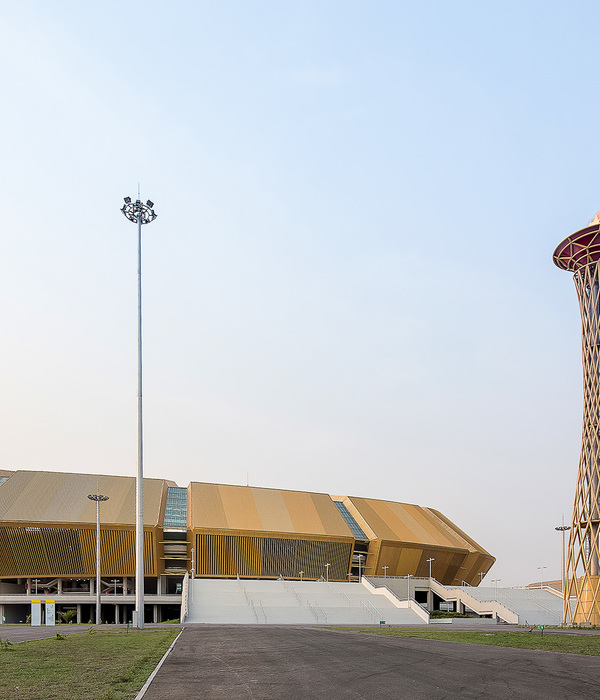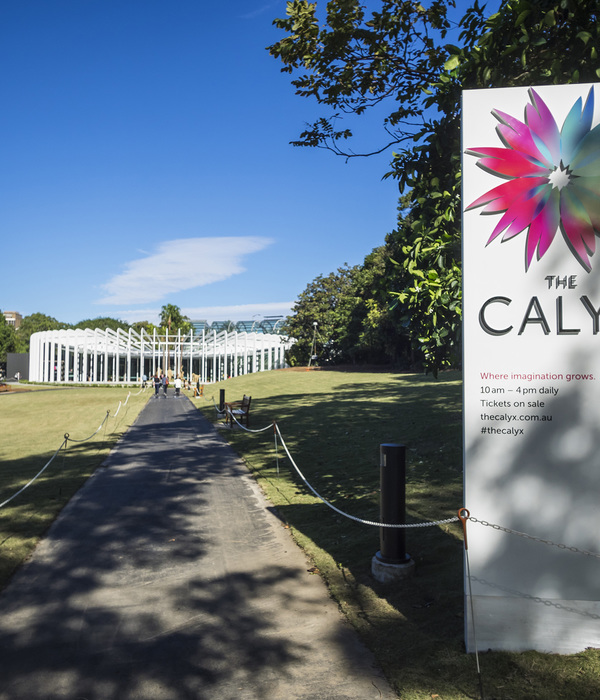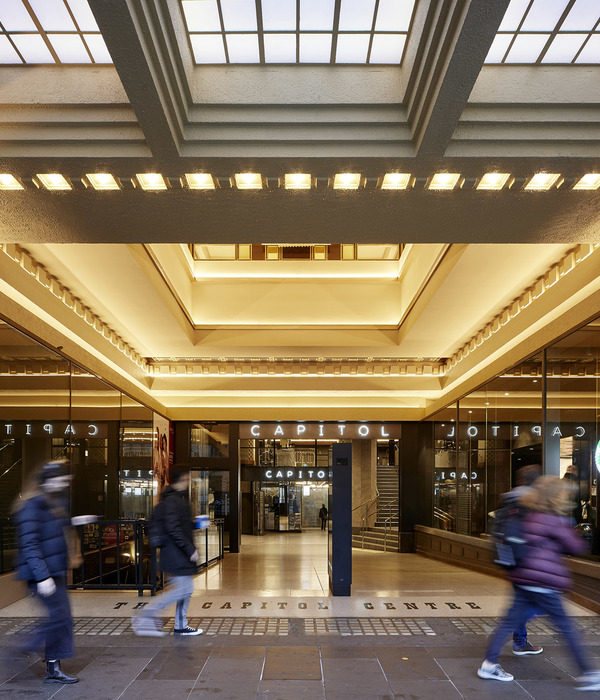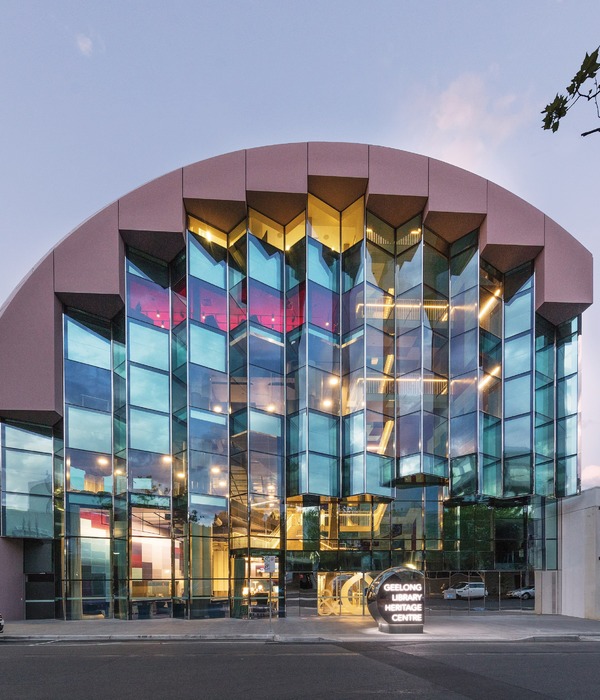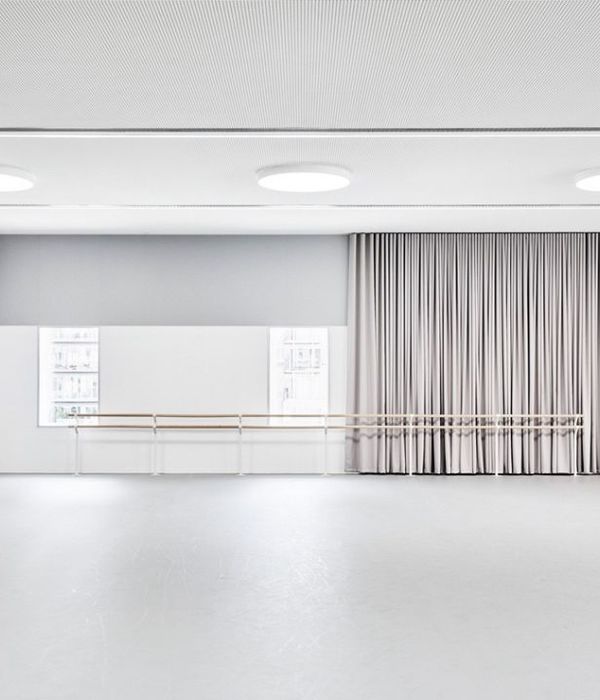© James Dow / Patkau Architects
詹姆斯·陶氏/帕托建筑师
架构师提供的文本描述。奥丹艺术博物馆的形式和特征被刻意限制,为艺术内部和周围的自然景观提供一个安静的、最小的背景。外表的简单形式被包裹在一个黑色的金属包里,它隐退到周围森林的阴影中。在打开这个信封的地方,为了提供入口门廊或从玻璃人行道到画廊的视野,深色的金属被一个诱人的发光木外壳所覆盖。内部的公共空间,从外部可见,继续这种温暖的发光物质。
Text description provided by the architects. The form and character of the Audain Art Museum is deliberately restrained to provide a quiet, minimal backdrop to the art within and the surrounding natural landscape. The simple form of the exterior is clad in an envelope of dark metal which recedes into the shadows of the surrounding forest. Where this envelope is opened, to provide access in the entry porch or view from the glazed walkway to the galleries, the dark metal is overlaid by an inviting luminous wood casing. Public spaces in the interior, which are visible from the exterior, continue this warm luminous materiality.
© James Dow / Patkau Architects
詹姆斯·陶氏/帕托建筑师
Ground Level
© James Dow / Patkau Architects
詹姆斯·陶氏/帕托建筑师
奥丹艺术博物馆是一个56,000平方英尺的私人博物馆,位于不列颠哥伦比亚省的惠斯勒。它将存放迈克尔奥登的个人艺术收藏品,追溯了从18世纪末到今天的不列颠哥伦比亚省的视觉记录。它包括世界上最好的旧第一民族面具收藏之一,艾米丽·卡尔绘画的精湛收藏,以及一些加拿大战后最重要的艺术家的作品,包括杰克·沙德波特、E·J·休斯和戈登·史密斯,以及国际知名当代艺术家的作品,如杰夫·沃尔、罗德尼、格雷厄姆、斯坦·道格拉斯等。
Project Description The Audain Art Museum is a 56,000 square foot private museum located in Whistler, British Columbia. It will house Michael Audains personal art collection which traces a visual record of British Columbia from the late l8th century to the present day. It includes one of the worlds finest collections of old First Nation masks, a superb collection of Emily Carr paintings, and works by some of Canadas most significant post-war artists including Jack Shadbolt, E. J. Hughes, and Gordon Smith, as well as works by internationally regarded contemporary artists such as Jeff Wall, Rodney Graham, Stan Douglas and others.
© James Dow / Patkau Architects
詹姆斯·陶氏/帕托建筑师
© James Dow / Patkau Architects
詹姆斯·陶氏/帕托建筑师
博物馆的设计由三个强有力的决定因素决定。第一个决定因素是需要容纳迈克尔奥登收藏品的永久展览,以及与这些收藏并列的来自加拿大和世界各地的各种临时展品。第二个决定因素是惠斯勒美丽但富有挑战性的地点,尽管这里有壮丽的常绿森林植被,但位于菲茨西蒙斯溪的洪泛区内。第三个决定因素是典型的惠斯勒降雪,平均每年累积深度接近15英尺。
The design of the museum is shaped by three powerful determinants. The first determinant is the need to house both the permanent exhibition of Michael Audains collection and, in juxtaposition with this collection, temporary exhibits of all kinds from across Canada and around the world. The second determinant is the beautiful but challenging site in Whistler which, although blessed by magnificent evergreen forest vegetation, is located within the floodplain of Fitzsimmons Creek. The third determinant is the enormous snowfall typical of Whistler which averages nearly 15 ft annual accumulated depth.
© James Dow / Patkau Architects
詹姆斯·陶氏/帕托建筑师
Main Level
© James Dow / Patkau Architects
詹姆斯·陶氏/帕托建筑师
我们的设计对这些决定因素做出了简单而直接的反应,将一系列的公共空间和画廊投射到周围森林中的一个现有的线性空隙中。它高出地面一整层,并加冕一个陡峭的倾斜屋顶,包含行政和后台的支持功能。
Our design responds to these determinants, simply and directly, by projecting a volume of sequential public spaces and galleries into an existing linear void within the surrounding forest. It is elevated a full storey above the ground and crowned with a steeply sloped roof, containing administration and back-of- house support functions.
© James Dow / Patkau Architects
詹姆斯·陶氏/帕托建筑师
建筑设计和选址工作在现场的范围内协同工作,以创造一个公共的行人连接,从_村推车,惠斯勒村的人行横道,穿过布莱克姆路,然后穿过博物馆,然后穿过该地点到菲茨西蒙斯溪公园。布莱克姆大道上的一座桥从森林中升起,到达了一座灯火通明的博物馆入口门廊。从那里,游客可以下降到森林地板和中央草地,继续通过现场,或进入博物馆大厅和活动空间。一旦进入,游客沿着一条玻璃人行道,俯瞰下面的草地,首先进入包含永久藏品的画廊,然后进入包含临时展品的画廊。
The building design and siting work synergistically within the context of the site to create a public pedestrian link, beginning from the _village strolF, the pedestrian spine of Whistler Village, across Blackcomb Way, leading to and through the Museum and then across the site to Fitzsimmons Creek park. A bridge from Blackcomb Way rises through the forest to arrive at a sky lit museum entry porch. From there, visitors can either descend to the forest floor and central meadow to continue passage through the site, or enter into the museum lobby and event space. Once inside, visitors proceed along a glazed walkway overlooking the meadow below, to gain access first to the galleries which contain the permanent collection and then to the galleries which contain temporary exhibits.
© James Dow / Patkau Architects
詹姆斯·陶氏/帕托建筑师
建筑和室内的形式和特征被刻意限制,为内部和周围的自然景观提供一个安静的、最小的背景。外表的简单形式被包裹在一个黑色的金属包里,它隐退到周围森林的阴影中。在打开这个信封的地方,为了提供入口门廊或从玻璃人行道到画廊的视野,深色的金属被一个发光的木头外壳覆盖。内部的公共空间,从外部可见,继续这种温暖的发光物质。永久展区和临时展区的画廊内部都是封闭的白色空间,只有很少的细节。
The form and character of the building and interiors is deliberately restrained to provide a quiet, minimal backdrop to the art within and the surrounding natural landscape. The simple form of the exterior is clad in an envelope of dark metal which recedes into the shadows of the surrounding forest. Where this envelope is opened, to provide access in the entry porch or view from the glazed walkway to the galleries, the dark metal is overlaid by a luminous wood casing. Public spaces in the interior, which are visible from the exterior, continue this warm luminous materiality. Gallery interiors in both the permanent and temporary exhibition areas are closed white volumes with minimal detail.
© James Dow / Patkau Architects
詹姆斯·陶氏/帕托建筑师
Architects Patkau Architects
Location Whistler, BC V0N, Canada
Category Museum
Lead Architects John Patkau, Patricia Patkau, David Shone, Michael Thorpe
Area 56000.0 ft2
Project Year 2016
Photographs James Dow / Patkau Architects
Manufacturers Loading...
{{item.text_origin}}

